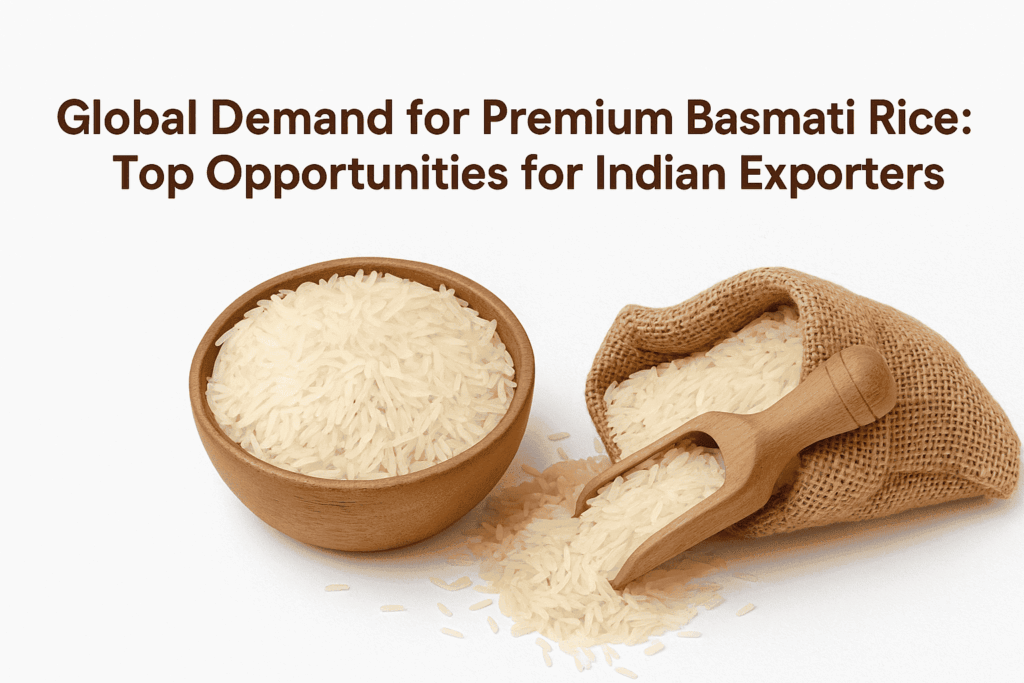
The demand for premium Basmati rice is soaring globally, creating lucrative opportunities for Indian exporters. International markets are increasingly shifting toward healthy, high-quality grains, which bodes well for India’s Basmati rice sector’s future growth. Further, the global market for Basmati rice is expected to reach $31.6 billion by 2027, growing at a compound annual growth rate (CAGR) of 9.1%, according to industry forecasts. This rise is fueled by heightened consumer awareness of ethnic foods, a growing preference for gluten-free and organic products, and Basmati rice’s health benefits, positioning India as the world leader in rice exports.
Premium Basmati Rice: A Global Health Trend
Once primarily a staple in South Asian kitchens, premium Basmati rice is now finding its place on dining tables around the world. The long, aromatic grains, aged to enhance texture and flavor, appeal to wellness-conscious consumers. With a low glycemic index and naturally gluten-free properties, Basmati rice is becoming a top choice for health-conscious individuals, especially those seeking an alternative to processed white rice.
The increasing global awareness of ethnic cuisines and traditional food habits has boosted the popularity of Basmati rice, especially in markets like North America, Europe, and parts of the Middle East. The growing demand for rice that balances both taste and nutritional value offers a huge growth potential for Indian exporters looking to tap into these changing preferences.
ALSO READ: India Introduces New Tariff Rule for Rice Exports From May 1, 2025
India: The World’s Largest Supplier of Basmati Rice
India’s dominance in the Basmati rice export market is undeniable. The country accounts for over 70% of global Basmati rice exports, with major markets including Iran, Saudi Arabia, UAE, the UK, and the United States. In the fiscal year 2023-24, India’s Basmati rice exports reached more than 5.24 million tonnes, marking a 14.93% increase in volume and a 22.05% increase in value compared to FY 2021-22.
This growth reflects India’s established position as the leading producer of premium Basmati rice. The country benefits from optimal climatic conditions, a robust rice supply chain, advanced milling infrastructure, and the Geographical Indication (GI) status, which protects the authenticity and quality of Indian Basmati rice.
Exploring New Market Opportunities for Basmati Rice
To fully capitalize on the global surge in demand, Indian rice exporters must look beyond traditional markets in the Middle East and the UK. By diversifying into new regions like Africa, Southeast Asia, and Latin America, Indian exporters can mitigate risks and uncover new growth opportunities. The rising diaspora in these regions and their increased demand for authentic Indian food are key factors that can drive growth in these untapped markets.
Trade agreements, such as the India-UAE Comprehensive Economic Partnership Agreement (CEPA) and upcoming Free Trade Agreements (FTAs) with the European Union, will facilitate smoother access to these new markets by reducing tariffs and opening up more opportunities for Indian Basmati rice exports.
Adapting to Market Challenges
Despite the promising outlook, several challenges must be addressed. Price volatility in the global market, changing regulatory standards—especially for pesticide use in the EU—and climate-related disruptions to rice cultivation can affect both supply and profitability. Additionally, competition from neighboring Pakistan, which also exports Basmati rice, remains a significant concern.
To maintain India’s leadership, rice exporters must emphasize superior quality, consistency, and traceability. Brand-building strategies that highlight the heritage and authenticity of Indian Basmati rice will further differentiate it from competitors. Innovations in rice-based products—such as ready-to-cook meals and healthier rice options—will also appeal to the evolving preferences of global consumers.
Conclusion: Future of Basmati Rice Exports
As the global appetite for premium Basmati rice grows, India is in an excellent position to capture a larger share of the international market. To fully leverage this opportunity, Indian exporters must focus on diversifying their markets, enhancing product innovation, and navigating the challenges posed by price fluctuations, Indian rice prices, and regulatory changes.
By strategically positioning Basmati rice as a symbol of Indian heritage and culinary excellence, India can reinforce its standing as the top global supplier of this beloved grain.
For Indian rice exporters and businesses looking to expand, staying informed about market dynamics and building strong international relationships will be key to sustaining growth in this rapidly evolving sector.
ALSO READ: India-Pakistan Conflict Drives Basmati Rice Prices Up: Impact on Global Trade and Exports
📞 Ready to Grow Your Rice Export Business?
Contact Shah Enterprises today for premium Basmati rice exports at competitive Indian Rice Prices.
Tap the button below to get in touch with our export team instantly.

